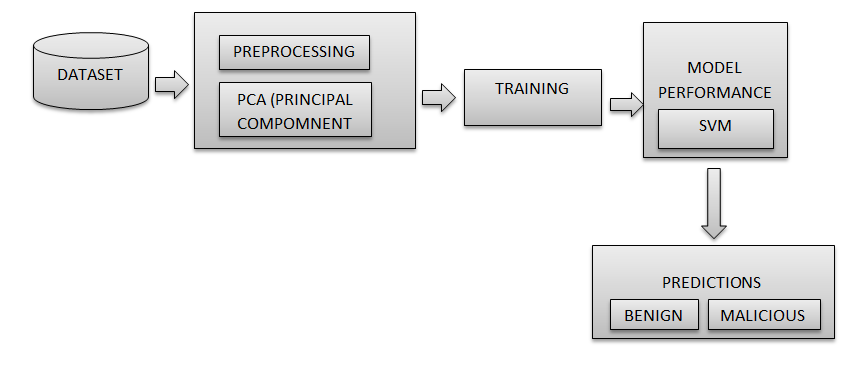A Machine Learning Technique to Detect Behaviour Based Malware
Objective
We aim to find malware status of a system by using machine learning algorithms such as support vector machine and principal component analysis based on the previous malware systems properties or data.
Abstract
Malware has threatened the organizations for a longtime and still have not made a lot of progress in detecting the malware on time.Malware can easily harm the system by executing the unnecessary services that will put the load on the system and hinder its smooth running.
There are two methods to detect the malware status, one being the old process of detecting the malware based on the signature and the other one being the behavior based method. The behavior of the malware is defined as the task the malware performs when it gets activated in the machine, for example, running the Operating System services, downloading the infected files from the internet.
Keywords: Malware, Malware Detection, Behavior, SVM And PCA.
NOTE: Without the concern of our team, please don't submit to the college. This Abstract varies based on student requirements.
Block Diagram

Specifications
SOFTWARE SPECIFICATIONS:
- Technology: Machine Learning, Application.
- Libraries: Pandas, Numpy, Sci-Kit Learning.
- Version: Python 3.6+
- Server-side scripts: HTML, CSS, JS
- Frame works: Flask
- IDE: Pycharm
HARDWARE SPECIFICATIONS:
- RAM: 8GB, 64-bit os.
- Processor: I3/Intel processor
- Hard Disk Capacity: 128 GB +
Learning Outcomes
- Scope of Real Time Application Scenarios.
- How Internet Works.
- What is a search engine and how browser can work.
- What type of technology versions are used.
- Use of HTML , CSS on UI Designs.
- Data Parsing Front-End to Back-End.
- Working Procedure.
- Introduction to basic technologies used for.
- How project works.
- Input and Output modules .
- Frame work use.
- Datsets properties.
- Machine learning algorithms.
- Data preprocessing methods.
- Principle component analysis.
- Types of malware status.
- SVM implementation.
- Need of dimensionality reduction.
- Project Development Skills:
- Problem analyzing skills.
- Problem solving skills.
- Creativity and imaginary skills.
- Programming skills.
- Deployment.
- Testing skills.
- Debugging skills.
- Project presentation skills.
- Thesis writing skills.





 Paper Publishing
Paper Publishing
